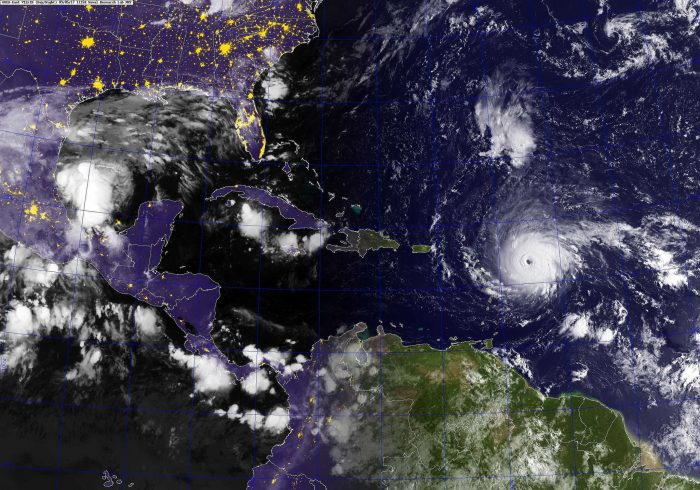
Last updated:
Hurricane Irma

Overview
Hurricane Irma was a major storm that formed out of a tropical wave on Sept. 2, 2017 and rapidly became a Category 3 hurricane overnight.
Irma made a total of seven landfalls; winds and rain associated with the storm caused devastation throughout the Caribbean, including the Leeward Islands, U.S. and British Virgin Islands, Puerto Rico, Cuba, and Haiti. Irma made landfall in Barbuda, Sint Maarten and the British Virgin Islands as a Category 5 hurricane throughout the day on Sept. 6, before weakening slightly and making a fourth landfall on the uninhabited Bahamian island of Little Inagua. Irma strengthened again, and made its fifth landfall on Cayo Romano, Cuba on Sept. 9 as a Category 5 hurricane before turning north towards Florida.
(Photo: Hurricane Irma Source: US Navy)
Despite having weakened to a Category 2 hurricane, as Irma moved across the warm waters of the Florida Straits, it quickly regained strength and became a Category 4 hurricane before making its sixth and seventh landfalls in the Florida Keys and along the Gulf Coast of Florida. After the seventh and final landfall, Irma moved north towards Georgia and the U.S. interior. Irma remained at hurricane strength through the entire state of Florida, only becoming a tropical storm after entering Georgia. Irma passed over Alabama, continuing to lose strength before dissipating over Missouri on Sept. 13.
Latest Updates
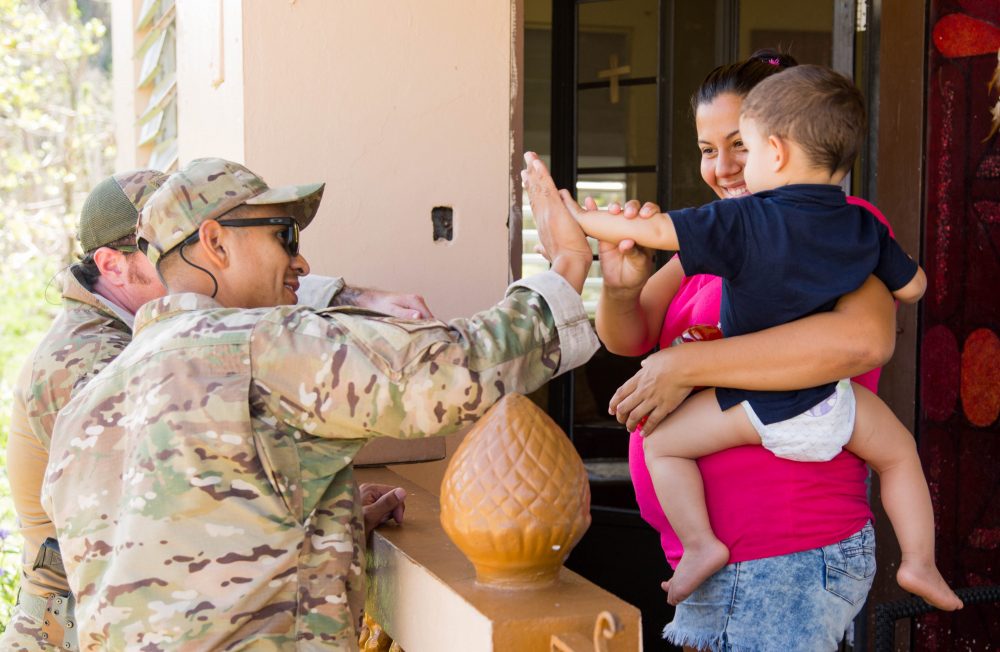
Announcing Six New Recovery Grants for the Caribbean and Florida
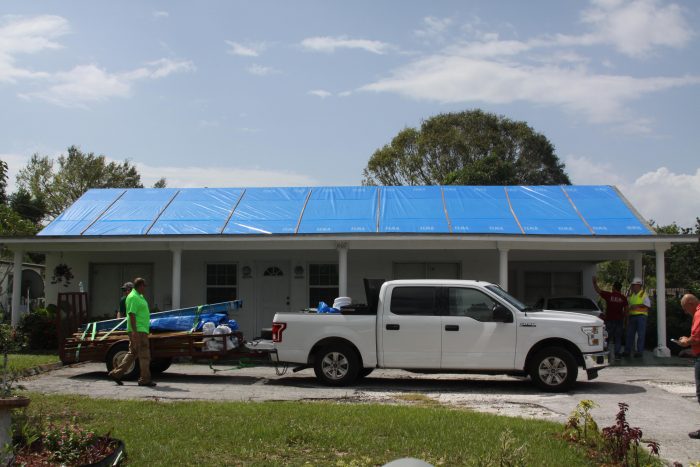
New Grants Support Post-Hurricane Irma Housing
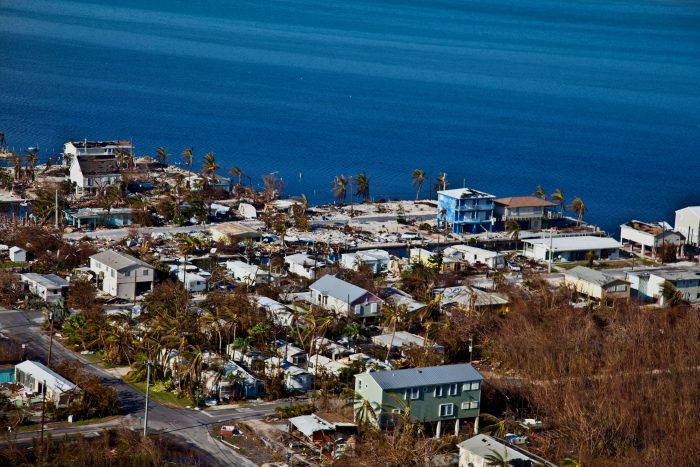
Hurricane Irma Grants Support Housing Recovery
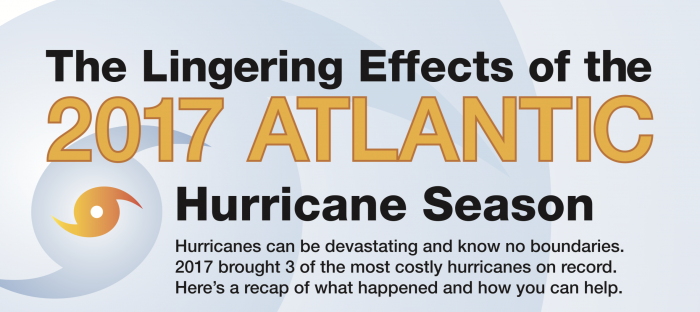
Seven Things You Need to Know About the 2017 Atlantic Hurricane Season
What was the impact in the Caribbean?
Irma’s first landfall in Barbuda brought almost complete devastation to the island, resulting in close to 95 percent destruction of buildings. Critical infrastructure in Barbuda was decimated with the total loss of communications, severe damage to the only hospital on the island and to the runway at the lone airport. As a result, the neighboring island of Antigua had to be used as a staging point for people and equipment to be moved to Barbuda by helicopter or boat.
As Irma moved through the Caribbean, it left a similar trail of devastation in its wake. On Sint Maarten, up to 95 percent of structures destroyed, including massive damage to the Princess Juliana International Airport. Throughout the Leeward and Virgin Islands, Puerto Rico, Cuba and Haiti and the Dominican Republic, communications, electricity and transportation infrastructure were all severely damaged. Even places where the hurricane did not make landfall were severely affected by strong winds and heavy rains, which led to flooding and landslides.
In the United States, Irma devastated the Florida Keys, causing them to be closed to all tourism and non-residents for almost a month, before moving up along the coast. Irma brought down trees and destroyed structures along the Gulf Coast of Florida as it moved toward the U.S. interior. Gale force winds and heavy rains caused damage throughout the state, and up through Georgia, before finally weakening. Ultimately, Irma caused $50 billion in damages in the U.S. alone.
Irma killed at least 92 people in the United States and 134 in total. One of the most notable impacts of Hurricane Irma was the deaths of twelve residents of the Hollywood Hills Rehabilitation Center. Located in the city of Hollywood, between Fort Lauderdale and Miami, this skilled nursing facility lost power when Irma’s winds disrupted the electrical system across the state. Although the facility had an emergency generator for backup power, it had been inoperable for a number of years.
Partial power was restored to the building, enough that the building was able to run fans and small air conditioning units, but not enough to run the building’s main air conditioning system. As a result, the temperatures in the building continued to climb. Because the maintenance and medical staff were unfamiliar with the operation of these individual air conditioning units, they inadvertently directed the exhaust heat back into the building, causing the temperatures on the second floor to reach 110 degrees Fahrenheit (43 degrees Celsius).
Ultimately, twelve deaths were directly attributed to the increased heat in the building, and a further twenty residents were immediately admitted to the adjacent hospital when the rehabilitation center was evacuated. As a result of these deaths, laws and licensing requirements were changed all over the world to ensure that safe temperatures could be maintained in assisted care, skilled care and other supportive residences. This is an important example of how disasters can teach responders what to do differently. Supporting these new initiatives is an important investment for philanthropy as safety improvements are often under-funded.
What was the impact in the U.S. mainland?
In the United States, Irma devastated the Florida Keys, causing them to be closed to all tourism and non-residents for almost a month, before moving up along the coast. Irma brought down trees and destroyed structures along the Gulf Coast of Florida as it moved toward the U.S. interior. Gale force winds and heavy rains caused damage throughout the state, and up through Georgia, before finally weakening. Ultimately, Irma caused $50 billion in damages in the U.S. alone.
Who was affected and in what ways?
Irma killed at least 92 people in the United States and 134 in total. One of the most notable impacts of Hurricane Irma was the deaths of twelve residents of the Hollywood Hills Rehabilitation Center. Located in the city of Hollywood, between Fort Lauderdale and Miami, this skilled nursing facility lost power when Irma’s winds disrupted the electrical system across the state. Although the facility had an emergency generator for backup power, it had been inoperable for a number of years.
Partial power was restored to the building, enough that the building was able to run fans and small air conditioning units, but not enough to run the building’s main air conditioning system. As a result, the temperatures in the building continued to climb. Because the maintenance and medical staff were unfamiliar with the operation of these individual air conditioning units, they inadvertently directed the exhaust heat back into the building, causing the temperatures on the second floor to reach 110 degrees Fahrenheit (43 degrees Celsius).
Ultimately, twelve deaths were directly attributed to the increased heat in the building, and a further twenty residents were immediately admitted to the adjacent hospital when the rehabilitation center was evacuated. As a result of these deaths, laws and licensing requirements were changed all over the world to ensure that safe temperatures could be maintained in assisted care, skilled care and other supportive residences. This is an important example of how disasters can teach responders what to do differently. Supporting these new initiatives is an important investment for philanthropy as safety improvements are often under-funded.
Housing
While most people have returned to their homes on the U.S. mainland, the same is not true for the islands that were hit. There continues to be significant challenges in designing and approving affordable housing that can withstand hurricanes and other disasters. Some people, especially tenants, are struggling to find housing in the U.S.-impacted areas.
Health/Behavioral Health
Those affected by Hurricane Irma have largely recovered from their physical health issues, although access to health care remains an issue. The challenge of building individual and familial resilience remains. People who rank higher in the Social Determinants of Health, as listed below, are more resilient toward life overall and specifically toward disasters. Any increase in one of these areas will provide an overall increase in the health and behavioral health of the people impacted by Irma.
- Income and income distribution
- Education
- Unemployment and job security
- Employment and working conditions
- Early childhood development
- Food insecurity
- Housing
- Social exclusion/inclusion
- Social safety network
- Health services
- Aboriginal status
- Gender
- Race
- Disability
In terms of mental health, there have been significant challenges. A year after the storm researchers in U.S. Virgin Islands found as many as 40 percent of children had signs of PTSD and 60 percent of adults exhibited depressive and PTSD symptoms.
Climate Research
With the changes occurring in global climate, more research is needed to better understand the causes and how best to predict, prevent and mitigate the effects of climate change, particularly in coastal areas that are susceptible to rising seas along with stronger and more frequent tropical storms.
Resilient Heating, Ventilation, and Air Conditioning (HVAC) Systems
Research continues to show that interior temperature is a much more reliable predictor of morbidity and mortality during extreme temperatures than the outside temperature. Grants, low-interest loans and other investments in resilient HVAC systems, especially for people who are vulnerable because of age, income, medical condition or other reasons, will be important to help reduce morbidity and mortality as the climate continues to experience extreme variability.
Island Recovery
Recovery on an island presents particular challenges. Access when ports, ferry docks and runways are destroyed means relief and recovery are slowed. Access to clean and safe water is a key issue immediately after a disaster and ongoing. The slow pace of recovery means some families end up resettling in a new community and do not return home.
Contact CDP
Philanthropic contributions
If you would like to make a donation to the CDP Hurricane Irma Recovery Fund please contact development.
Recovery updates
If you are a responding NGO or a donor, please send updates on how you are working on recovery to tanya.gulliver-garcia@disasterphilanthropy.org.
Donor recommendations
If you are a donor looking for recommendations on how to help in the recovery, please email regine.webster@disasterphilanthropy.org.
Philanthropic and Government Support
CDP’s Hurricane Irma Recovery Fund raised $1.4 million, with grants being issued to ten organizations in July and September 2018. These grants focused on housing, particularly for vulnerable people and people experiencing homelessness. Grantees included Centro Campesino, Florida Keys Community Land Trust, The Heart of Florida United Way, Miami Beach Community Development Corporation and the Redlands Christian Migrant Association (Immokalee Unmet Needs Coalition).
A few examples of CDP grantmaking include:
Centro Campesino received $150,000 for the pilot development of a housing collaborative in Miami-Dade and Monroe counties. Additional funding is being sought by the grantee through Enterprise Community Partners and NeighborWorks America. Centro Campesino was also awarded a second grant for $200,000 to support home repairs for minority and vulnerable populations in Miami-Dade and Monroe counties who were still in need following Hurricane Irma.
Florida Housing Coalition (FHC) was awarded $36,000 for staff and system costs associated with conducting weekly update calls on long-term housing needs in Florida, with special attention to Hurricane Irma demands. For this grant, CDP collaborated with Fannie Mae which contributed an additional $10,000. During the second round of grants from the CDP Hurricane Irma Recovery Fund, FHC received an additional $100,000, in continuation of grant work from Wells Fargo Foundation and National Low-Income Housing Coalition that allowed FHC to evaluate the availability of housing recovery resources and to build a strategic framework for housing providers to escalate the development of affordable housing in Central Florida.
Monroe County Long-Term Recovery Group (LTRG) received $50,000 for building staff capacity. Securing staff for long-term case management work, including a large focus on housing, was critical to recovery in the Florida Keys. Other funders to this grantee included the Community Foundation of the Florida Keys, Volunteer Florida, United Way of the Florida Keys, The Miami Foundation and the Miami Dolphins Foundation. During the second round of grants from the CDP Hurricane Irma Recovery Fund, Monroe County LTRG received an additional $49,917 to provide support to volunteers working on repairs and reconstruction to homes damaged or destroyed by Hurricane Irma.
The NAACP received a $10,000 grant to train and certify representatives from 25 branches of the NAACP Florida State Conference as Community Emergency Response Team (CERT) members. The CERT program trains volunteers to prepare for, respond to and recover from the types of disasters that their communities may face.

Government Support:
The United States government declared disaster in the US Virgin Islands, Puerto Rico, Florida and Georgia, resulting in total commitments from FEMA of $3.1 billion. Every county in Florida (DR-4337) received some type of disaster assistance designation, with $1.8 billion dollars of public assistance grants being obligated and just over $1 billion in Individual and Household dollars that went to just under 775,000 individuals.
DR-4335 for the U.S. Virgin Islands provided $104 million in total obligations, with approximately 8,900 individual assistance applications receiving $41 million of that and $64.7 million obligated in public assistance grants. Puerto Rico (DR-4336) was not hit directly by Irma, but the winds caused significant damage across the island, leading to over $23 million of assistance. There were 1,674 individual assistance grants approved for a total of $12.9 million and an additional $10.8 million approved in public assistance. Although Irma had decreased in strength to a tropical storm by the time it reached Georgia (DR-4338), it still caused massive damage across the state, resulting in over $121 million of public assistance grants; $13.6 million that went to 9,371 individual assistance applicants.
U.S. Household Disaster Giving in 2017 and 2018 is a collaborative report from the Center for Disaster Philanthropy, Candid and the Indiana University Lilly Family School of Philanthropy. This research identified that only six percent of U.S. households surveyed donated to Hurricane Irma-related needs, while another four percent donated to general hurricane relief.
CDP, along with our partner Candid, tracked a total of $124 million of philanthropic donations to Hurricane Irma-related resources. These included a $50 grant from the Catalina Marketing Charitable Foundation to the St. Petersburg Free Clinic to match funds raised and a $10,000 grant from the Dollar General Literacy Foundation to the East Lee High School to help replace books and laptops that were damaged during Hurricane Irma. The Lilly Endowment gave a total of $15 million, split evenly between United Way, the Salvation Army and the American National Red Cross.
We welcome republication of our content. Please credit the Center for Disaster Philanthropy.
Fund resources
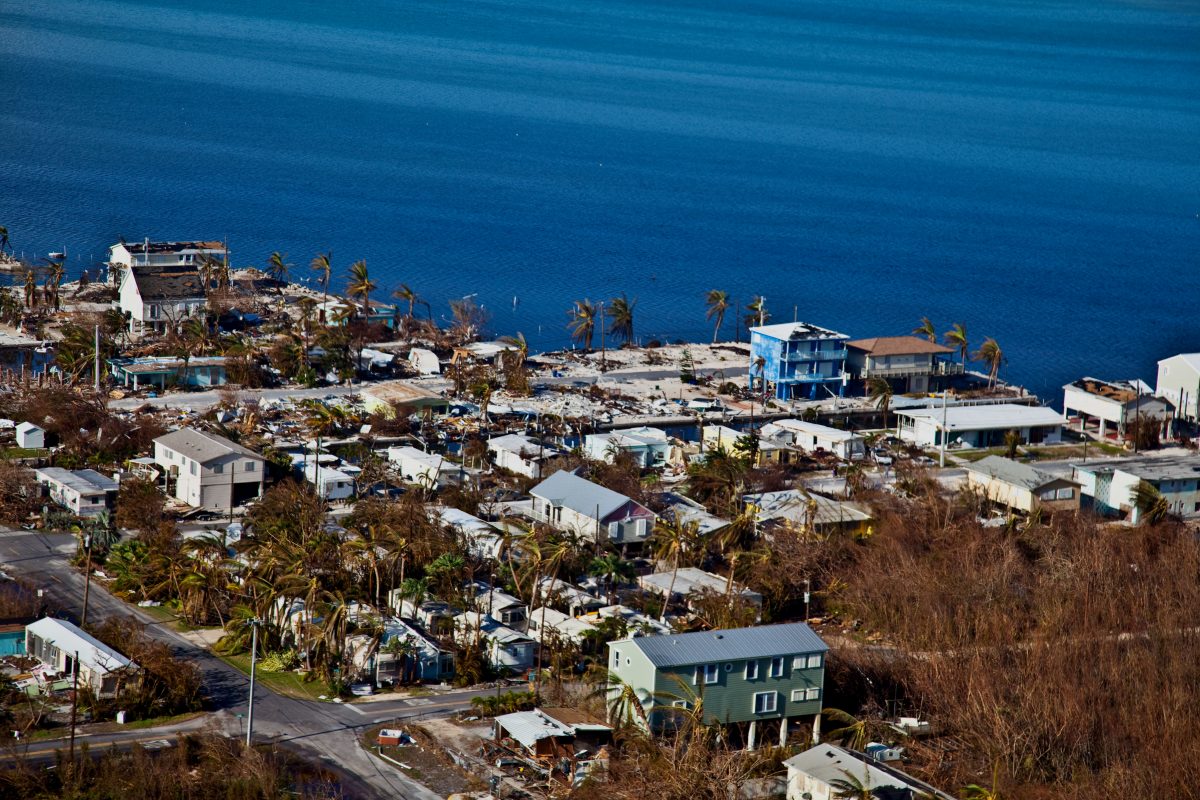
Hurricanes, Typhoons and Cyclones
Tropical cyclones (also known as hurricanes and typhoons) pose significant global threats to life and property, bringing a variety of hazards, including storm surges, flooding, extreme winds and tornadoes. Funders can intervene to reduce harm to people and property, before, during and after storms.

Is your community prepared for a disaster?
Explore the Disaster Playbook